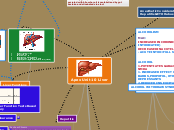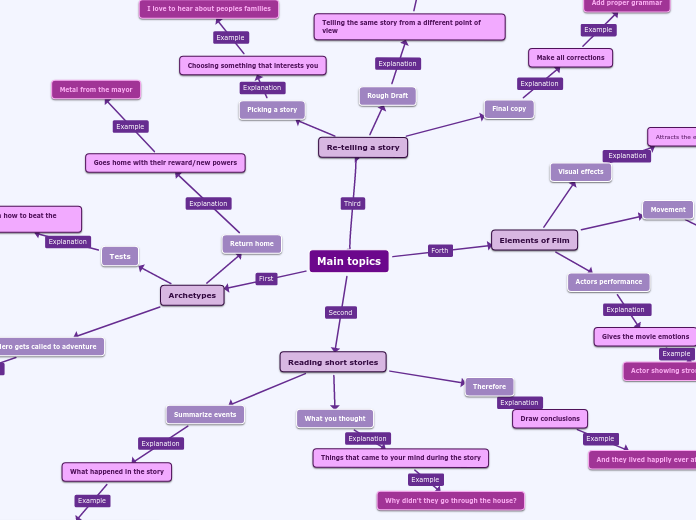Lobule
Hepatic Blood Flow
Effects of Anesthesia
GA and Neuraxial can decrease liver blood flow due to decrease in MAP. Induction can decrease by 30-50%!
Hepatic Artery
25% of liver blood flow, 50% of O2 content
Hepatic Artery Perfusion Pressure = MAP - Hepatic Vein Pressure
*Hepatic Arterial Buffer Response - decrease in portal vein flow is compensated by an increase in hepatic artery flow. mediated by adenosine (potent vasodilator)
Portal Vein
75% of liver blood flow, 50% of O2 content
Receives venous blood that has passed through the splanchnic circulation.
Portal Perfusion Pressure = Portal Vein Pressure - Hepatic Vein Pressure
Liver receives ~30% of cardiac output. Supplied by 2 vessels
ALCOHOL WITHDRAW SYNDROME
DTs
-Occur 2-4 days without alcohol
S/S include grand mal seizures , tachycardia, hypertension or hypotension and combativeness.
Treatment: Diazepines and beta blockers
Other considerations
-Alcoholics are vitamin B1 deficient
-Disulfram is the treatment for alcoholics in recovery
S/S of withdrawal
Early: Tremors and disordered perception ( hallucinations and nightmares)
Late: Increased SNS activity ( Tachycardia, hypertension, dysrhythmias), N/V, insomnia, confusion and agitation.
Treatment: Alcohol, beta blockers, alpha 2 agonists
ALCOHOLISM
MAC:
INCREASED IN CHRONIC ETOH (NOT INTOXICATED)
DECREASED IN ACUTELY INTOXICATED
- ACUTE INTOX=FULL STOMACH
ALCOHOL
1.POTENTIATES GABA 2. INHIBITS NMDA
1. INCREASED EFFECT OF BENZOS, BARBS, PROPOFOL, OTHER CNS DEPRESSANTS
2.REDUCED CNS EXCITABILITY
IMPAIRS PHARYNGEAL REFLEXES
CHRONIC HEPATITIS:
Proceed so long as condition is stable
(MILD DISEASE CONFERS NO ADDITIONAL RISK OF SURGICAL MORBIDITY OR MORTALITY)
ACUTE HEPATITIS:
Non-emergent surgery: postpone until LFTs normalize & symptoms resolve
Use ISO (preserves HBF most)
Regional is safe (ensure no coag defects)
Avoid: Halothane, PEEP (resistance to hepatic drainage)
Keep normocapnic, adequate IVF hydration
Monitor NMJ:
-decreased pseudocholinesterase activity (SUX)
-Decreased biliary excretion (ROC)
-Large Volume of distribution
AVOID hepatotoxic drugs & CYP450 inhibitors:
HALOTHANE, ACETAMINOPHEN, AMIODARONE, ABX: PCN, TETRACYCLINE, SULFONAMIDES
Goal: Promote Hepatic Blood Flow & avoid drug that cause hepatocellular injury
Hemostatic proteins
Procoagulants--all clotting factors except vWf, III, VIII
Factors II, XII, IX, X are Vitamin K dependent, which is absorbed in the presence of bile in the gut
Fibrinolytics (Plasminogen)
Thrombopoeitin--stimulates platelet production
Anticoagulants--antithromnbin, proteins C,S, and Z (also vitamin K dependent
**Factor VIII is produced by liver sinusoidal/endothelial cells, NOT hepatocytes.
Plasma Proteins
Produces all plasma proteins except Immunoglobulins
When liver function is impaired, drugs that typically bind to these proteins will have a higher Vd
Alpha-a acid glycoprotein--basic drugs
Albumin--acidic drugs
Metabolic Function
Lipids
Synthesizes cholesterol, lipoproteins, phospholipids
Energy release via beta-oxidation of fatty acids (used in Krebs cycle)
Conversion of lipids to energy storage molecules--triglycerides
Proteins
Deamination of amino acids allows conversion to carbohydrates and fats.
Deamination of AAs produces ammonia, which is converted to urea by the liver for renal clearance. Excess ammonia causes hepatic encephalopathy.
Carbohydrates
Hyperglycemic induced insulin release stimulates conversion of excess carbohydrates (glucose) to glycogen (glyogenesis) in the liver. Liver impairment reduces glycogen stores and precipitates hypoglycemia
Bilirubin
Once conjugated, and made more hydrophilic, it is excreted with bile where it is metabolized by gut bacteria and eliminated via stool
The lipophilic bilirubin is transported to liver bound to albumin, where it is conjugated by glucoronic acid
Spleen converts aged hemeglobin (120 days) to unconjugated bilirubin--which is neurotoxic.
Synthetic Function
Pseudocholinesterase
Impaired liver function reduces prodution--prolonged Sux, and possibly ester LA, DOA
Liver function tests
Synthetic Function Test
PT 12-14 sec
- Sensitive for acute injury
- Prolonged by Vit K deficiency
Albumin 3.5-5.0 g/dL
- Not sensitive for acute injury
- Condition that reduce albumin: infection, nephrotic syndrome, malnutrition, malignancy, burns
Hepatocellular Injury
AST 10-40 units/L
ALT 10-55 units/L
-Marked elevation of both suggests hepatitis
-AST/ALT ratio > 2 cirrhosis or alcoholic liver disease
Bilary Duct Obstruction
Alkaline Phosphatase 45-115 units/L
-Not very specific ( in bone, tumors, placenta)
Y Glutyml transpeptidase 0-30 units/L
- More sensitive than AP
5'- Nucleotidase 0-11 units/L
-Most specific indicator for biliary obstruction
When obstruction these enzymes will spill into the systemic circulation
Hepatic Clearance
Bilirubin 0-11 units/L
-Hemolysis and hematoma reabsorption
Changes in Liver Function Tests Based on Hepatic Injury
• Largest internal organ
• 7th to 11th rib
• SNS from T3 – 11
• Functions as a blood reservoir
• Functional unit = Lobule = Acinus
o Hepatocytes arranged around central vein (venule)
Liver Functions
Anesthetic Considerations for Hepatitis & ETOH abuse
Cirrhosis
Physiologic changes
6. Hematologic:
A. Anemia: decreased CaO2 d/t hemorrhage, folic acid deficiency, hemolysis, and bone marrow depression
B. Reduced factor production: decreased procoagulants and decreased anticoagulants -> bleeding or clot risk (depends on balance).
C. Thrombocytopenia: decreased thrombopoietin and bone marrow depression -> decreased platelet production. Splenomegaly-> increased platelet consumption.
5. Renal:
A. Renal hypoperfusion-> decreased GFR-> Increased RAAS -> NA and H2O retention (dilutional hyponatremia may occur)
B. Hepatorenal syndrome-> decreased GFR-> renal failure )liver transplant is definitive tx)
4. Autonomic: Increased SNS and Increased RAAS and ANS reflex dysfunction
3. CNS-
A.Hepatic encephalopathy: decreased hepatic clearance-> increased ammonia-> cerebral edema-> increased ICP (increased ammonia treated with lactulose, abx, and decreased protein intake.
-Bleeding-> blood reabsorption-> increased nitrogen load-> increased ammonia
2. Pulmonary-
A. Restrictive defect: Ascites and/or pulmonary effusion-> decreased compliance and atelectasis
B. Respiratory Alkalosis: Hypoxemia-> compensatory hyperventilation
C. Hepatopulmonary syndrome: pulmonary vasodilation-> intrapulmonary shunt (R to L)-> hypoxemia
D. Portopulmonary hypertension: PAP >25 mmHg in the setting of portal htn
1. CV-
A. Hyperdynamic circulation: portosystemic shunt & vasodilator release->
-drops SVR and BP-> dropped CO
-Increased RAAS activiation-> increases blood volume (patient may behave like he is hypovolemic)
-Increased peripheral blood flow (shunting)-> increased SvO2
-Decreased response to vasopressors
-Diastolic dysfunction
B. Portal HTN: increased hepatic vascular resistance-> increased backpressure to proximal organs, esophageal varices-> bleeding, Splenomegaly-> thrombocytopenia
C. Ascites: decreases oncotic pressure and protein binding, increased volume of distribution, and drainage-> leads to hypotension
What’s the TIPS procedure??
-Transjugular intrahepatic portosystemic shunt- bypasses a portion of the hepatic circulation by shunting blood from the portal vein (hepatic inflow vessel) to the hepatic vein (hepatic outflow vessel). Portal pressure is reduced and minimizes back pressure on the splanchnic organs-> thus reduces the likelihood of bleeding from esophageal varices wich reduced the amount of ascites -> temporary treatment for hepatorenal syndrome.
-Hemorrhage is a significant risk during TIPS procedure.
What is Cirrhosis?
-Hepatic cellular death, where healthy hepatic tissue is replaced by nodules and fibrotic tissue-> number of functional hepatocytes are reduced as well as the number of sinusoids.
-As the number of hepatocytes decrease the liver can’t carry out its essential functions.
-The number of blood vessels passing through the liver is reduced, therefore increasing the hepatic vascular resistance (portal hypertension).
-Body creates collateral blood flow to compensate for increased resistance= portosystemic shunts.
-This blood bypasses the liver, drugs and toxins (ammonia) remina in the systemic circulation for a longer period of time.
Scoring systems-> MELD and Child-Pugh Score:
MELD-> model of end-stage liver disease: uses a logarithmic calculation that examines 3 factors of hepatic function: bilirubin, INR and serum creatinine.
-Low risk= <10
-Intermediate risk= 10-15
-High risk= > 15
Child-Pugh Score: examines 5 factors of hepatic function: albumin, PT, bilirubin, ascites, and encephalopathy.
-Class A: 5-6 points-> 10% risk of periop mortality.
-Class B: 7-9 points-> 30% risk of periop mortality.
-Class C: 10-15 points= 80% risk of periop mortality.
-Patient with class A or B optimized- reasonable to proceed with surgery, patient in class C should be medically managed until hepatic function improves.
Apex Unit 10 Liver
Hepatitis
Acute or Chronic
Most common cause of liver cancer and indication for liver transplant.
Caused by viruses, hepatotoxins, and autoimmune responses
In US, most common cause of hepatitis is from either hepatitis A, B, C, or D virus. Hepatitis E is rare in US
Other viral etiologies-herpes simplex, CMV, Epstein Barr
Viral hepatitis is usually silent for 2 weeks following infection.
Then signs and symptoms include fever, malaise,N/V, jaundice and usually last 2-12 weeks.
Hepatitis A
Incidence-50%
Fecal-oral transmission
Serum markers: Early- IgM, late-IgG
Does not cause cirrhosis or hepatocellular carcinoma
Prophylaxis after exposure- pooled gamma globulin, Hep A vaccine
Hepatitis B
Incidence-35%
Percutaneous or sexual transmission
Serum markers: HBsAG, Anti-HBcAg
Can cause cirrhosis/liver CA in up to 5% of adults and 80-90% of children
Prophylaxis after exposure- Hep B immunoglobulin, Hep B vaccine
Hepatitis C
Incidence-15%
Percutaneous transmission
Serum marker-Anti-HCV 1.5-9 months
Causes cirrhosis, liver CA in up to 75% of cases
Prophylaxis after exposure- Interferon + Ribavirin
Hepatitis D
Co-infection with type B
percutaneous transmission
Serum markers: late-Anti-HDV
Drug Induced Hepatitis
Associated with late onset, usually 2-6 weeks after insult, as long as 6 months.
Clinically indistinguishable from viral hepatitis. Requires lab confirmation.
A lot of hepatotoxic drugs but most important for us is acetaminophen, Halothane, and alcohol.
Chronic hepatitis
Inflammation that exceeds 6 months
Progressive destruction of liver tissue, cirrhosis, liver failure
most common cause is alcoholism folled by Hep C
Dx: increased liver enzymes and bilirubin, hitologic evidence of liver inflammation
S/sx: jaundice, fatigue, thrombocytopenia, glomerulonephritis, neuropathy, arthritis, myocarditis.
Prolonged PT, decreased albumin.
Main topic
Subtopic
Biliary Flow
Function: Bile is produced by the hepatocytes.
It contains cholesterol and waste products including bilirubin and bile salts.
Half the bile runs directly into the duodenum and the half is stored in the gallbladder which is released in response to a meal.
Flow: Bile produced by hepatocytes drains into the canaliculi and then into the bile ducts.
The bile ducts converge to form the common hepatic duct (CHD).
Also joining the CHD are the cystic duct from the gallbladder and the pancreatic duct
The CHD empties into the duodenum, controlled by the sphincter of Oddi
Biliary obstruction:
Intrahepatic causes: Hepatitis, cirrhosis, TPN, hypoxia, ischemia, drugs including inhaled anesthetics and abx, sepsis.
Extrahepatic causes: Pancreatitis, gallstones, bile duct injury, malignancy, infection and biliary cirrhosis
Cholelithiasis (gallstones) is the most common cause of obstruction.
Physical obstruction causes a predominantly conjugated hyperbilirubinemia – jaundice
Normal serum bilirubin -0.2 – 1.2 mg/dL.
Jaundice may not be recognizable until levels reach 3 mg/dL
Chronic cholestasis, if unrelieved, may lead to cirrhosis.
Vitamin deficiency from malabsorption of fat-soluble vitamins A,D,E,K
In acute cholangitis, stasis can lead to bacteremia, septic shock, death.
Pts who undergo biliary tract sx for obstruction may develop postoperative acute oliguric renal failure from the release of nephrotoxic bile salts, pigments, endotoxins and inflammatory mediators.
3 tests of biliary obstruction
1. 5’-Nucleotidase (0-11 units/L) MOST SPECIFIC
2. Y Glutamyl transpeptidase (0-30 units/L)
3. Alkaline phosphatase (45-115 units/L) not very specific – also found in bone, placenta, tumors
Fun fact: Glucagon is administered during ERCP to relax the biliary sphincter (side effect – N/V)









